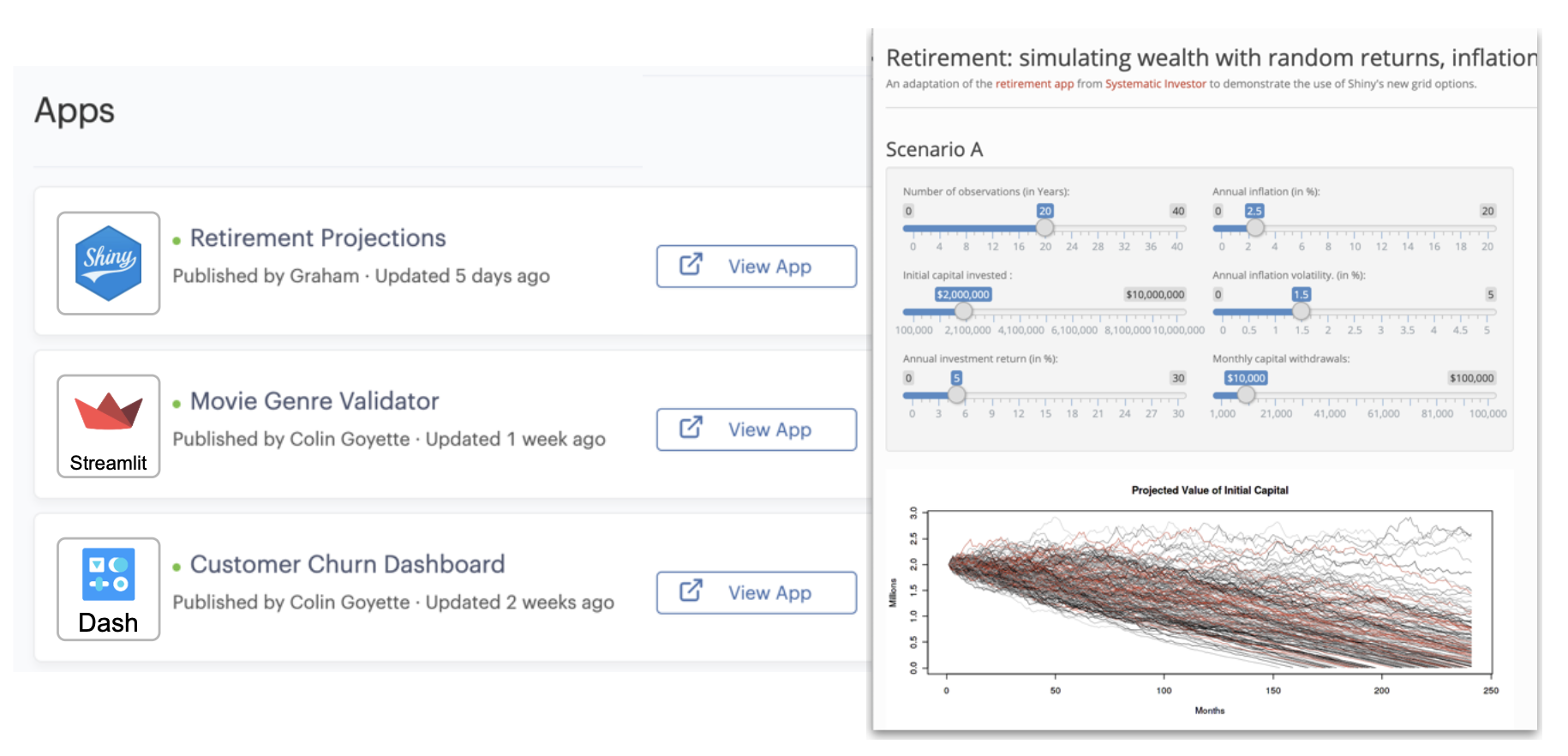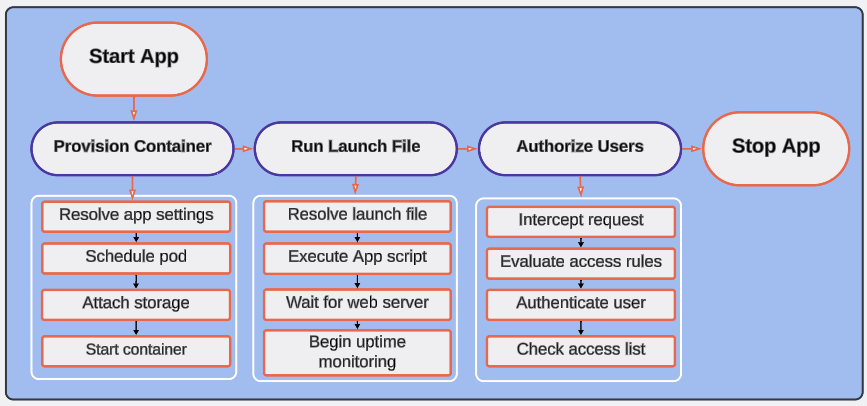Use Domino Apps to turn code in your project into an interactive web application. Apps run in containerized environments that provide routing, authentication, resource management, and isolation from other project workflows.

You can use Apps to share tools built with frameworks such as:
Domino handles the infrastructure so you can focus on your app logic.
-
Interactive UI delivery - Publish live dashboards, forms, or visualization tools directly from your Domino project.
-
Built-in routing and security - Domino proxies all requests to your App and handles identity injection, access controls, and URL routing.
-
Flexible runtime configuration - Each App has its own compute environment, hardware tier, and Git branch. Apps run independently of Workspaces and Jobs.
-
Multiple Apps per project - You can define and publish multiple Apps in the same project. Each App has a unique or custom URL.
Domino Apps make data science insights directly accessible across the organization through simple, browser-based interfaces. They provide a simple, browser-based interface so stakeholders and operational teams can interact with models, dashboards, and tools without technical setup.
Use cases for Domino Apps include:
-
Stakeholder delivery - Share both early prototypes and final products in a format stakeholders can use directly.
-
Operationalizing data science - Deploy models or workflows as interactive applications.
-
Business decision support - Provide calculators, scenario testing, or model outputs through a user-friendly UI.
-
Analytics dashboards - Publish visualizations and monitoring tools for stakeholders or operations.
-
Data exploration - Enable interactive exploration of datasets, models, or what-if scenarios.
Apps are best when you need to put data science in front of the business, making results easy to consume, interpret, and act on.
Apps are not intended for persistent workflows or large-scale back-end processing. For batch operations, automation, or long-running pipelines, use Use Jobs or Scheduled Jobs. For collaborative development or exploratory work, use Workspaces.
The diagram below shows how Domino provisions and runs an App, from container startup to routing and identity handling. It shows the components Domino manages for you, and how your configuration (environment, hardware tier, launch file, and branch) drives the process.

To run an App, Domino performs a series of orchestration steps: provisioning the container, executing the launch file, monitoring uptime, and proxying all requests through its secure gateway.
Key elements of an App
Each App is defined by four key elements that control how Domino provisions and runs it:
-
Launch file - the entry point that starts the App. It must start a process that binds to
0.0.0.0and serves traffic on port8888. -
Compute environment - the container image with required packages, libraries, and dependencies.
-
Hardware tier - the compute resources used to run the App.
-
Code branch - the Git branch the App runs from (for Git-based projects).
A Project can host multiple Apps, each with its own definition. App Structure and Lifecycle has more detailed explanations of each element.
Access to Project resources
When an App runs, it executes in a container with access to specific project resources. These resources define what the App can read, write, or connect to during execution.
| Resource | Behavior |
|---|---|
Project files | Available read/write inside the container. |
Datasets | Mounted with read/write access (if enabled). Access follows the App starter’s permissions, or can be filtered by the requester’s identity through the Dataset API. |
Data sources | Available using the App starter’s credentials. You can also apply per-requester logic if identity propagation is enabled. |
Environment variables | Injected from the App starter and project settings. Useful for securely passing secrets or configuration. |
|
Note
|
File changes inside an App container are not saved to the project repository. To persist results, write to Datasets or external systems. |
App startup process
When an App is published or started, Domino provisions resources and runs the defined configuration:
-
Provision a container and mount project files.
-
Apply the selected Compute Environment and Hardware Tier.
-
Execute the Launch File to start the web server on port
8888. -
Route traffic through a secure proxy and inject request headers.
-
Use Best Practices for Apps to make your apps easier to find and maintain.
-
Create and Publish an App has instructions on creating and publishing your Apps, customizing the App’s URL, and sharing Apps with authorized users.
